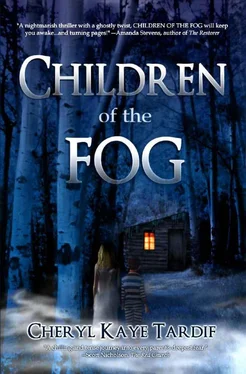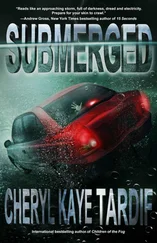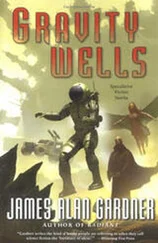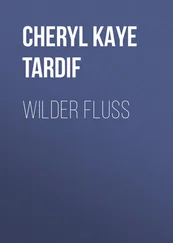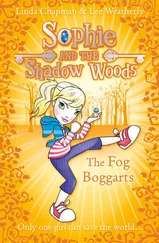Sadie sighed. “My son would’ve loved it.”
“Unfortunately, it’s closed. Can’t go in until May, or you’ll disturb the bats and kill them.”
“Kill them?”
“If they wake up too early in the spring, they’ll starve to death,” the woman explained.
Sadie moved on to the next set of photos. Many were restored black and whites with curled edges, illustrating the progression of the town’s development. In some of them, hardworking farmers plowed fields of barley and hay.
“Agriculture always was very important in this area,” Martha continued. “It still is. Many Hinton families have been farmers for generations.”
Farther down, a row of women’s portraits graced the wall.
Sadie nudged her head in their direction. “Who are they?”
“All of our librarians.”
“How come you aren’t up there?”
“I’m just a volunteer,” Martha said, looking disappointed.
Sadie patted her arm. “I’m sure you’re much more than that.”
She studied the portraits, admiring the artists’ techniques. It was interesting to see the progression of fashion styles and facial expressions. In the earlier paintings, the women stared straight ahead, unsmiling. Halfway down, that changed.
But it was the portrait on the end that made her pause.
The woman in it looked vaguely familiar. She sat in a green plaid wingback chair, her pale blond hair swept up into a loose bun. She had a half-smile on her face, but it didn’t reach her vacant blue eyes.
Martha cleared her throat. “Did you know Carissa?”
“She looks… familiar. I think I’ve seen her recently.”
“That’s not possible.” Martha’s response was quick, almost breathless.
“No, I’m sure I’ve met her. Somewhere.”
“She’s passed on.”
“Passed on?” Sadie caught sight of the mournful expression in Martha’s eyes. Dead, you idiot. Like Sam.
“Yes. Four years ago.”
“Hey, you wouldn’t happen to have any of my books here, would you?” Sadie asked, adroitly changing the subject.
“Of course we do,” Martha replied proudly. “We have all of them. It was Carissa who discovered you, when she went to the city the year before she died.” She waddled over to a bookcase and pulled a hardcover from the shelf. “Here we go. Deadly Diamonds . It’s one of my favorites.”
Sadie dug in her purse for a pen. “Can I sign some of them?”
“Really? Oh my! That would be wonderful.”
On the title page of Deadly Diamonds , Sadie wrote a dedication to the library and signed her name. Then she signed three more books and handed them to Martha.
“The rest have been checked out,” the woman said. “Of course, we’ll have to keep an eye on these, make sure no one checks them out permanently .” She let out a girlish giggle and her double chin shook. “Maybe I can get you to sign one of mine sometime.”
“I’ll be back in two days. My laptop doesn’t last much longer than that. I’ll try to stop by.”
“I’m here every day ’til two.”
Sadie peeked at her watch. Her laptop had been charging for almost an hour. It was now past one, past lunch. She was getting hungry. Time to go home and dig into the bologna and cheese she had in the cooler.
“Well, I’d better get back to the pub.” On the way out, she remembered something. “Martha, what kind of car do you drive?”
“A red Caddy,” the woman replied. “Why?”
“Just curious.”
Sadie smiled. Ten bucks! She’d get takeout.
At Ed’s Pub, she picked up her laptop, phone and an order of fish and chips. She bought a small yellow flashlight—the only one in stock—and extra batteries at the hardware store and drove back to the cabin. Passing the sign for Cadomin Cave, she felt an impulsive urge to turn down the road, but remembered Martha’s warning—the cave was closed until May.
She thought of the blond-haired librarian in the photo.
It wasn’t until she was eating her lunch on the veranda that she remembered where she had seen her before. The woman had been wearing a teal jacket.
And holding Sam’s hand.
In a daze of confusion, she struggled with the impossible idea that she had seen a dead woman.
And Sam.
“So, what—you’re seeing ghosts now? I see and hear dead people. Great. Now what would Philip say to that?” At the sound of her husband’s name, she recalled something. “Damn!” She’d forgotten to mail his documents.
Intent on packing everything into a box and bringing it to town the following day, she hurried down the path and unlocked the Mercedes. She grabbed the plastic bin, hefted it to her hip and slammed the trunk. Then she started back, walking cautiously, since she couldn’t see her feet.
By the time she reached the cabin, she was covered in a thin layer of sweat and every muscle in her arms ached. She pushed aside the back door with her hip, realizing too late that she’d nudged it a bit too hard. The door hit the inside wall. Then it rebounded back at her and threw her off balance. The bin flew out of her hands and upended on the ground, scattering papers, binders and file folders everywhere.
“Shit!”
Startled by her unusual outburst, she covered her mouth and giggled. Leah was right. Swearing was liberating.
“Shit, shit, shit!”
Grinning, she swept the mess of papers and files into a pile, and as she dumped everything back into the bin, a plain white envelope caught her eye. It was addressed in block letters to Philip. At his office. Besides the fact that it had no return address, there was something peculiar about the envelope, but she couldn’t put her finger on it.
She opened it.
The letter had one paragraph of typed print and was dated over two years ago.
Philip, it began. Leave me alone! I told you that night was a mistake. It can never happen again. Ever! I will never forgive myself if Sadie finds out.
It was signed L .
“LaToya,” she said, scowling. “I knew it. Just another notch in Philip’s belt.”
Since there was no time to surrender to jealousy and regrets, she tucked the letter back inside the envelope and tossed it into the bin, which she dropped on a kitchen chair and hastily put out of her mind.
She spent the afternoon outside on the veranda, painting and soaking up the warm sun. The drawings had evolved to watercolors, and time flew by as she lost herself in her work.
“Soon you’ll be done, Batty.”
More and more, she caught herself talking to the comical little rodent on the paper. Around four o’clock, she finished shading the entrance of a forbidding cave and she would have continued painting, but a strong breeze made her look up. The sapphire sky was being gobbled up by ravenous charcoal clouds.
“Damn. Time to pack it in.”
She brought everything inside, and the moment she shut the door, the wind kicked up, howling in rebellion like a toddler in a full-blown temper tantrum. Immediately, the skies unleashed a torrential downpour that pounded the roof. Between the rain, wind, crackling fire and occasional sickened gong from the grandfather clock, Sadie felt as though she were sitting front row at a symphony that was seconds from an earsplitting crescendo.
Since there wasn’t much else she could do, she curled up on the sofa with a mug of hot chocolate and a photo album. It was the perfect time to do something she had been putting off for weeks—a melancholy but necessary trip down memory lane.
Taking a deep breath, she flipped open the album.
Her mouth lifted. “You were so tiny, Sam. So perfect.”
The photo had been taken in the hospital the day Sam had been born. His eyes were open and his skin emanated a healthy blush. She remembered how her heart had ached for nine months wondering if he’d be born healthy or if she’d miscarry like the others. After Sam was born, she kept asking the nurses, “Are you positive he’s okay?” They assured her that he was.
Читать дальше
